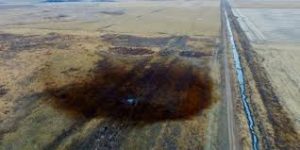
The cause of the crude oil spill from the Keystone pipeline in eastern North Dakota is still unknown, but a North Dakota state regulator revealed this week the affected area is nearly 10 times the amount of land initially reported.
Environmental scientist Bill Suess says the Oct. 29 leak actually impacted more than 209,000 square feet of land and not the 22,500 square fee first reported by regulators.Calgary, Alberta-based TC Energy, formerly known as TransCanada, estimated its pipeline leaked an estimated 383,000 gallons (1.4 million liters) of oil. Suess said that estimate has not changed.
He described the initial assessment by regulators as “a quick and dirty look” and since then, the damage expanded onto more land.
The pipeline was returned to service Nov. 10 after repairs were made and the restart was approved by the U.S. Pipeline and Hazardous Materials Safety Administration.
Crews remain on the site collecting some of the oil and making sure it doesn’t seep into more land. Operator TC Energy stated it had recovered about 337,550 gallons of oil and another 141,834 gallons of oily water. The company plans to take the oily soil to a landfill in Sawyer, North Dakota.
The pipeline became operational in 2011 and carries crude oil from Canada through North Dakota, South Dakota, Nebraska, Kansas and Missouri to refineries in Cushing, Oklahoma and one in Patoka, Illinois.





